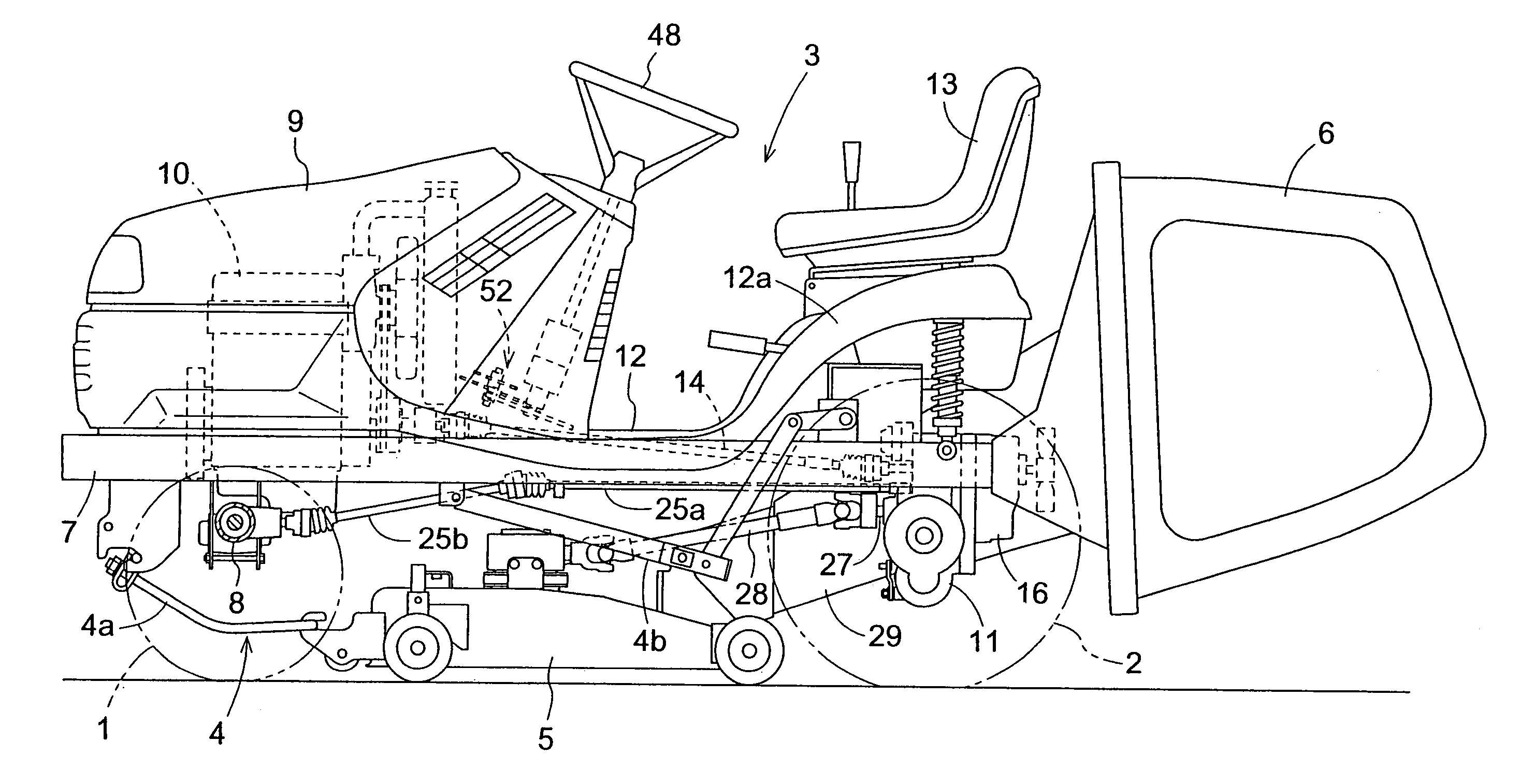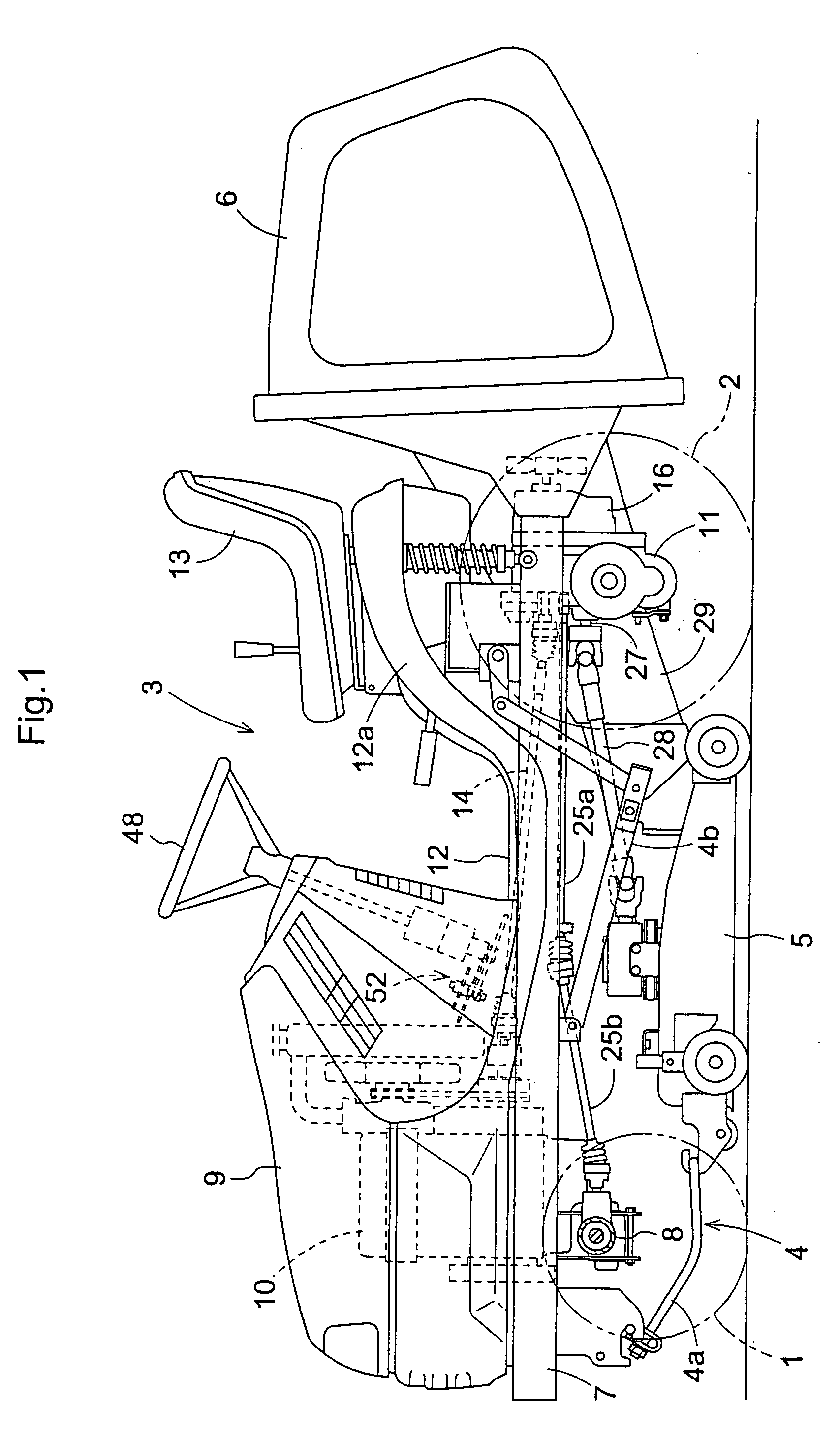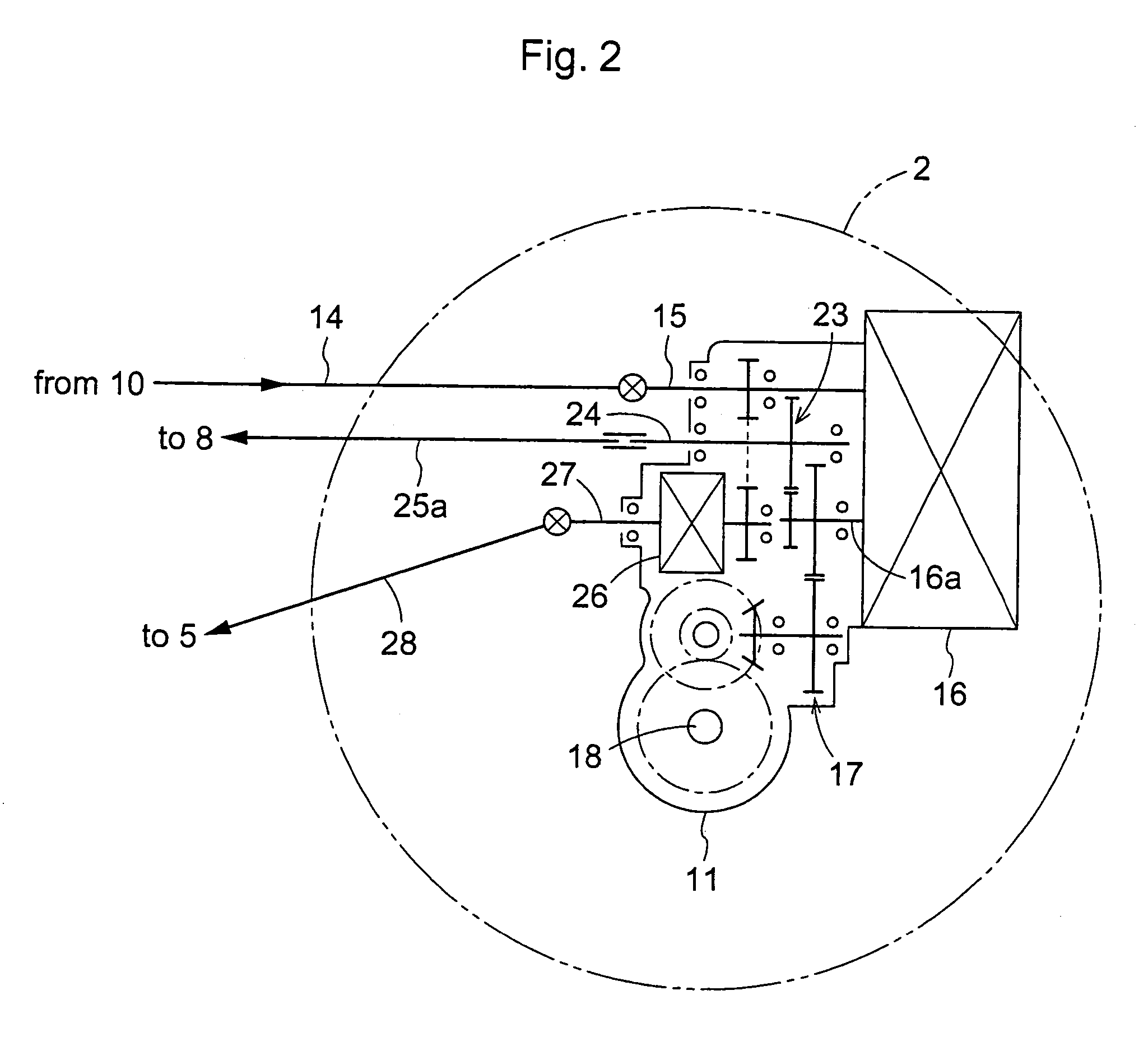Four-wheel drive work vehicle
a four-wheel drive, work vehicle technology, applied in the direction of tractors, brake systems, transportation and packaging, etc., can solve the problems of large displacement, large turning radius of the vehicle, and difficulty in adjusting the speed of the vehicle, so as to achieve a small turning radius and easy operation
- Summary
- Abstract
- Description
- Claims
- Application Information
AI Technical Summary
Benefits of technology
Problems solved by technology
Method used
Image
Examples
Embodiment Construction
[0038]FIG. 1 is an overall side view showing a passenger-driven lawn mower vehicle as an example of a work vehicle relating to the invention. This passenger-driven lawn mower vehicle includes a passenger-driven traveling vehicle body 3 provided as a four-wheel drive type including front wheels 1 as steerable wheels and rear wheels 2 as non-steerable wheels. To the bottom of the vehicle body 3, there is suspended a mower implement 5 via a quadruple link mechanism 4 consisting of front links 4a and rear links 4b, such that the mower implement 5 can be lifted up and down. To the rear of the vehicle body, there is connected a grass collecting container 6 for collecting lawn or grass cut by the mower implement 5.
[0039]The vehicle body 3 mounts thereon a pair or right and left main frames 7. To the front of these frames 7, there is mounted a front axle case 8 steerably mounting the front wheels 1 to the right and left ends thereof, with the axle case 8 being capable of rolling movement ab...
PUM
 Login to View More
Login to View More Abstract
Description
Claims
Application Information
 Login to View More
Login to View More - R&D
- Intellectual Property
- Life Sciences
- Materials
- Tech Scout
- Unparalleled Data Quality
- Higher Quality Content
- 60% Fewer Hallucinations
Browse by: Latest US Patents, China's latest patents, Technical Efficacy Thesaurus, Application Domain, Technology Topic, Popular Technical Reports.
© 2025 PatSnap. All rights reserved.Legal|Privacy policy|Modern Slavery Act Transparency Statement|Sitemap|About US| Contact US: help@patsnap.com



